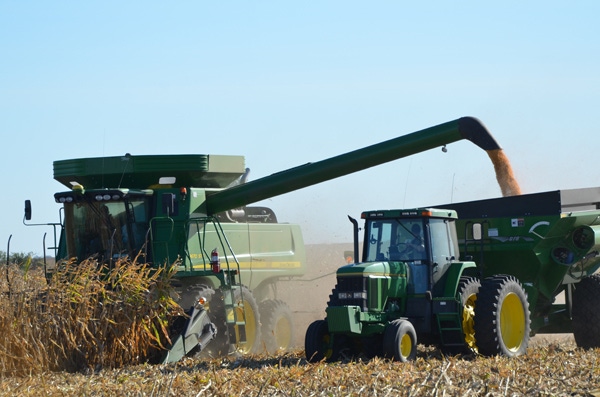Farm Bureau survey shows farmers cautiously optimistic
Farmers' perspective on next five years slightly improved from short-term outlook.

Farmers are cautiously optimistic that recent news on the trade front will manifest itself in the form of increased export volumes and, ultimately, improved farm profitability. Until then, however, they are reluctant to make significant investments in their operations.
This sentiment was reflected in an informal online survey that the American Farm Bureau Federation (AFBF) conducted between Jan. 8 and Feb. 14, 2020, of nearly 300 respondents across the Midwest. The survey sought to gain insight into their short- and long-term perspectives on important topics such as commodity prices and costs, farm profitability, land values and cash rents, farm debt and farm investment decisions.
Regarding commodity prices, the survey showed that less than 25% of the respondents expect commodity prices to be higher in 2020 than in 2019, while nearly 50% expect prices to be about the same. More than 26% expect prices to be lower in 2020. Over the next five years, however, the survey participants have a more favorable outlook regarding commodity prices, with more than 45% expecting higher prices.
The U.S. Department of Agriculture currently projects total production expenses in 2020 to increase by more than $10 billion, or 3%, to $354.7 billion. AFBF found that nearly 60% of respondents agree that farm production expenses will rise in 2020, while only 7% expect expenses to fall. The outlook over the next five years was more favorable, with nearly 82% of the survey respondents expecting farm production expenses to fall. For context, AFBF said farm production expenses have increased by 16% over the last decade and have increased in seven out of the last 10 years.
“Higher production costs are a near certainty in agriculture,” the organization added.
Despite the forecast for a slight improvement in prices and farm profitability in 2020, AFBF reported that nearly 50% of the survey respondents expect farm profitability to be lower in 2020. Approximately 36% expect profitability to be about the same, and only 17% expect higher profits. Survey respondents were slightly more optimistic about the next five years, with only 38% expecting lower profitability and more than a quarter expecting higher profitability.
Aside from production costs increasing, AFBF said one other certainty in agriculture is that land prices and cash rents are going up.
“The value of farm assets in 2020 is currently forecasted at $3.1 trillion, and since 2006, farm asset values have increased by 64%,” the bureau reported.
In fact, AFBF pointed out that farm asset values over the last 30 years have declined only three times -- in 2002, 2009 and 2015 -- each coinciding with a downward shock in net farm income. Further, cash rental rates have mostly kept pace with inflation and increased 1.4% in 2019.
The majority of survey respondents expect cash rents and farmland values to remain the same in 2020, while 45% expect farmland values and cash rents to increase over the next five years. Only 14% of respondents expect farmland values and cash rents to decline in 2020 and over the next five years.
U.S. farm debt, according to AFBF, is projected to be a record-high $425 billion in 2020, and real estate debt is projected to be a record-high $265 billion in both nominal and real dollars. Additionally, AFBF noted that farm debt has increased for 17 consecutive years and declined only once over the last 20 years. A large majority of the survey respondents expect that debt to continue to rise in 2020, and nearly 60% expect farm debt to increase over the next five years.
“Importantly, in the short run, less than 9% of respondents expect farm debt to decline, and in the longer run, less than 10% of respondents expect debt to decline,” AFBF said.
The cautious optimism was further reflected when farmers were asked about investments. Data from USDA’s Economic Research Service showed that capital expenditures on vehicles and machinery were record high in 2014, at $33 billion, but they have since fallen by 36%, or nearly $12 billion.
“During 2020, farm expenditures on vehicles and machinery are expected to fall slightly to $21 billion,” AFBF reported. “This aligns with survey responses in which more than 56% of respondents indicated farm investments and capital purchases would decline in 2020. Only 13% of respondents expect to make additional capital investments in 2020.”
Over the next five years, however, more than a quarter of respondents expect to make additional capital investments, the survey showed.
About the Author(s)
You May Also Like





